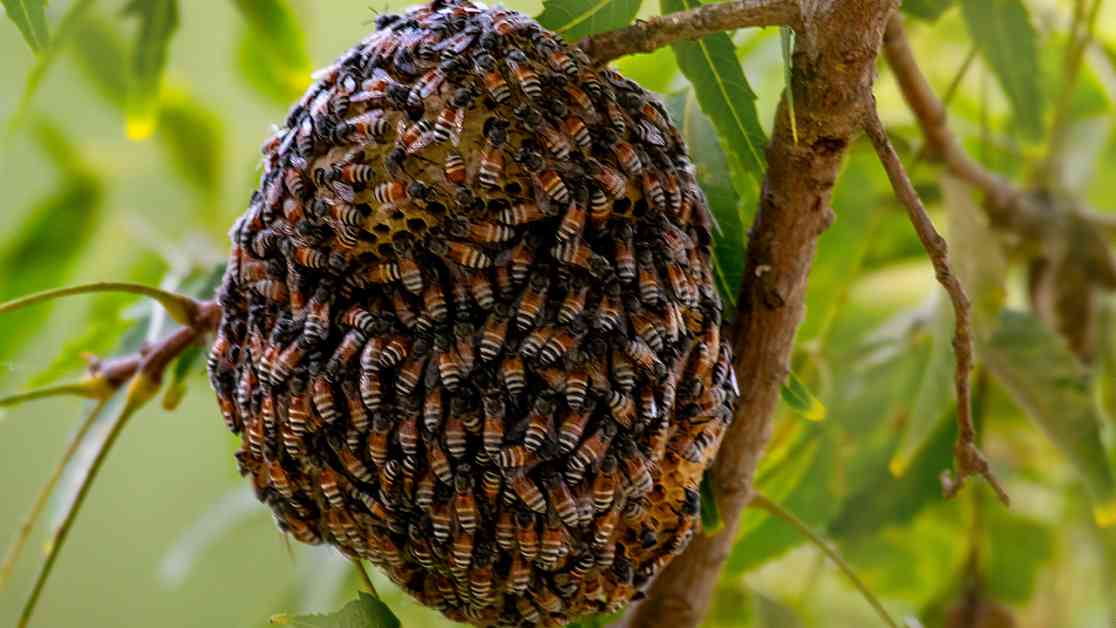The recent discovery of an invasive red dwarf bee colony in Europe has raised concerns among biologists about the potential impact on the local ecosystem. On August 21, 2024, a study was published revealing the presence of red dwarf bees for the first time in Europe. This alarming development has sparked discussions among experts about the risks posed by these invasive insects.
Concerns Over the Presence of Red Dwarf Bees in Malta
Scientists have identified the presence of Apis florea, a species of red dwarf bee native to Asia, in Malta. This invasive bee species has caused unease among local beekeepers and environmental advocates due to its potential threat to European bees. Dave Goulson, a biology professor at the University of Sussex, expressed his concerns to The Guardian, stating that « Apis florea may compete with native pollinators for pollen and nectar, a group of insects already facing decline. It is also likely that these bees carry multiple diseases to which European bees have little resistance. »
The report indicates that Apis florea has expanded its territory from Asia to the Middle East and northeast Africa, but its presence in Europe was previously unknown. A colony of 2,000 adult bees was discovered in Malta, and DNA tests confirmed their species. The nest was promptly destroyed, but scientists suspect that other bees may have already dispersed to establish nests elsewhere.
Juliana Rangel, a professor of apiculture at Texas A&M University, highlighted that the bee colony was found near the Birżebbuġa free port in southeast Malta, suggesting that the insects may have been transported by a commercial ship. She emphasized that commercial shipping routes serve as fast pathways for various bee subspecies, wasps, and other flying insects to migrate from their original habitats to distant locations.
Implications of Climate Change on Invasive Species
Rangel also noted that the arrival of Apis florea in Europe serves as further evidence of climate change. The warming temperatures associated with the climate crisis facilitate the spread of species to new territories. The FICSUM research group at the University of Montreal supported this claim, explaining how rising temperatures enable the survival and proliferation of invasive species in regions like Malta and other southern European countries.
The mild winters in Malta and neighboring regions create favorable conditions for the survival of invasive species like Apis florea. Rangel predicted an increase in such invasions in the coming years, facilitated by the short distances between Mediterranean islands. She urged authorities to remain vigilant and emphasized the importance of promptly removing identified specimens while advocating for enhanced surveillance efforts, especially in entry ports where swarms of bees can hitchhike on ships.
Understanding Apis florea: The Red Dwarf Bee
Apis florea, commonly known as the Asian red dwarf bee, measures approximately 3.27 mm in length. Primarily found in Asian and African countries, this species thrives at altitudes below 500 meters. Their nests consist of a single comb constructed in the open air on tree branches, with a platform on top used for communication through their unique « dance. »
While Apis florea is not harmful to humans, their stings can induce toxic reactions. PictureInsect, a specialized website, provides detailed information on the characteristics and behavior of this species, shedding light on its habits and potential impact on local ecosystems.
In conclusion, the discovery of an invasive red dwarf bee colony in Europe highlights the ongoing challenges posed by invasive species and climate change. Scientists and environmentalists must work together to monitor and mitigate the spread of such species to protect native ecosystems and biodiversity. The case of Apis florea serves as a reminder of the interconnectedness of global ecosystems and the importance of proactive conservation efforts to safeguard our environment for future generations.

